#UHD 2160p monitor
Explore tagged Tumblr posts
Text
LG UltraFine UHD 27-Inch 4K UHD 2160p Computer Monitor
Gadgets and Home Essentials may earn a commission. You incur no extra cost when you buy through links on our site. Imagine a computer monitor with 8.3 million pixels. It shows images with unmatched detail and clarity. Welcome to the LG UltraFine UHD 27-Inch 4K UHD 2160p Computer Monitor. It’s a display that raises the bar for visual excellence. This 27-inch marvel has a stunning 4K UHD (3840 x…
#27-Inch 4K monitor#Computer monitor technology#LG electronics#LG UltraFine monitor#UHD 2160p monitor
0 notes
Text
Price: [price_with_discount] (as of [price_update_date] - Details) [ad_1] iVANKY 10FT 4K Long HDMI Cable could transfer data at the speed of up to 18Gbps at 60Hz. High Speed Data Capacity - iVanky 4K HDMI Cable 10 ft supports HDMI 2.0b including 18 Gbps, Mirror & Extend mode, Ultra HD 4K 2160p, HD 2K 1080p, QHD 1440p, HDCP 2.2, 48-Bit Deep Color, Audio Return(ARC), Dolby TrueHD 7.1 audio and Hot plugging. 4K HDMI Cable HDR - Perfect for your 4K UHD TV. Compatible for your streaming devices, Apple TV 4K, NVIDIA SHIELD TV, CD/DVD/Blu-ray players, Fire TV, Roku Ultra, PS4/5, Switch, computers, or other HDMI-enabled devices to your 4K/HD TV, monitors, displays or projectors. Innovative improvement - Designed for all devices with HDMI 2.0 standard and backwards compatible with HDMI 1.4, 1.3 & 1.2. Tinplate Metal Shielding and gold-plated, corrosion-resistant connectors can protect against external signal interference, guarantee stable signal transmission and minimize signal loss. Ultra Durability Design - Built with premium slim aluminum shell and high-quality nylon braided jacket, this HDMI cord can withstand bend test of 10,000+ times without reducing cable flexibility and ensure the best performance possible. iVANKY's Customer Support- Feel free to contact our top-notch customer support team with any questions or concerns. [ad_2]
0 notes
Text
Mega menu 3
$210 $175 Select by Features Anti Glare Screen Blue Light Filter Flicker-Free Height Adjustment Portable Tilt Adjustment Touchscreen Hot Panel Rock Mount Adaptive Multi-Monitor Anti-Theft Mechanisms Eco-Friendly Deal & Discount All Discounts Today’s Deals New Resolution Type 4K UHD 2160p FHD 1080p Quad HD (2560×1440) Ultrawide 8K (7680×4320) XGA Wide 1440p Trending…

View On WordPress
0 notes
Video
youtube
Jingxin 2023 hot seller UHD 2160P PC Monitor For Designer
0 notes
Text

شاشة Gigabyte M27U مقاس 27 بوصة 160 هرتز 2160 بكسل UHD-KVM، شاشة عرض 4k،
فقط بـ 2295 ريال بدلاً من 3125 ريال
للطلب من خلال موقعنا : https://ttajer.com/ar/product/gigabyte-m27u-27-160hz-2160p-uhd-kvm-gaming-monitor/
#تتاجر #شاشات #ttajer #monitor #gigabyte #GS27FC
0 notes
Text
Amazon.com: WOLFBOX i17 Dash Cam Front Inside, 4K+2.5K 5G WiFi Dual Dash Camera with 64GB Card, 2160P UHD 3" LCD Car Camera for Cars with Super IR Night Vision, Smart Parking Monitor, GPS, Loop Recording : Electronics
"<iframe sandbox="allow-popups allow-scripts allow-modals allow-forms allow-same-origin" style="width:120px;height:240px;" marginwidth="0" marginheight="0" scrolling="no" frameborder="0" src="//ws-na.amazon-adsystem.com/widgets/q?ServiceVersion=20070822&OneJS=1&Operation=GetAdHtml&MarketPlace=US&source=ss&ref=as_ss_li_til&ad_type=product_link&tracking_id=pinterestsa03-20&language=en_US&marketplace=amazon®ion=US&placement=B0C1RZW6R5&asins=B0C1RZW6R5&linkId=fec6d6dd62660eb6294da768771c77cb&show_border=true&link_opens_in_new_window=true"></iframe>"
https://www.amazon.com/dp/B0C1RZW6R5?ref=emc_p_m_5_i#:~:text=%3Ciframe%20sandbox%3D%22allow,link_opens_in_new_window%3Dtrue%22%3E%3C/iframe%3E
0 notes
Text
Más apuntes (atrasados)
15/03/23
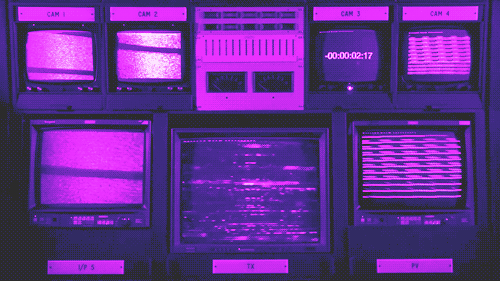
El pixel como unidad básica de medida
La importancia del pixel como unidad básica de medida en la era digital y cómo esto afecta la visualización de la información en pantallas.
Las pantallas son esenciales en la comunicación digital y su ubicuidad ha aumentado gracias a los dispositivos móviles y el internet de las cosas. La variación en las características de las pantallas, como su tamaño y resolución, exige adaptabilidad en el diseño de productos digitales para garantizar una buena visualización en diferentes dispositivos.
Esta variación de dispositivos y resoluciones genera procesos de diseño orientados a la adaptación y el cambio en lugar de la rigurosidad y el control propios de los procesos de composición tradicionales.
Tipos de pantalla

Existen cuatro tipos de pantallas:
monitores CRT
monitores TFT LCD
monitores OLED
Monitores CRT

Los monitores CRT surgieron en 1987 y su señal era analógica, lo que les daba gran compatibilidad pero presentaban incompatibilidades con los estándares digitales.
Monitores TFT LCD
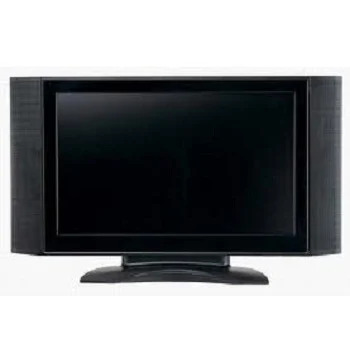
Los monitores TFT LCD permiten mejorar la calidad de imagen y utilizan moléculas de cristal líquido para polarizar y rotar los colores.
Monitores OLED

Los monitores OLED, por otro lado, no necesitan luz trasera y ahorran energía. También tienen mejor contraste debido a la activación selectiva de pixeles en áreas específicas del monitor.
Monitores VGA
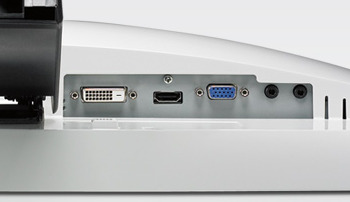
Los monitores VGA, que también fue lanzado por IBM en 1987. Al igual que el monitor CRT, utiliza una señal analógica y es compatible con los estándares de su época.
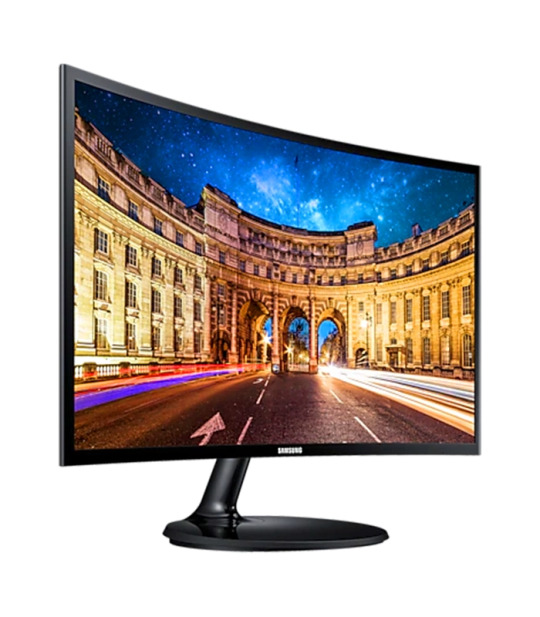
Actualmente, los conectores DVI también están en proceso de ser reemplazados por las tecnologías HDMI y DisplayPort.
Es importante considerar estos tipos de monitores debido a los estándares que establecieron para los monitores de computadora durante muchos años y que aún son utilizados en algunos monitores de tipo CRT o TFT.
Resolución

La resolución se define como el número total de píxeles que se pueden mostrar en la pantalla y se calcula multiplicando la anchura por la altura. La relación de aspecto puede variar y depende de la forma del monitor y de la tarjeta gráfica.
Hay dos tamaños de pantalla: el tamaño absoluto, medido generalmente en pulgadas y la resolución o tamaño relativo, determinado por el número de píxeles que se muestran en la ventana del monitor.
El tamaño absoluto depende del monitor mientras que el tamaño relativo depende de la tarjeta gráfica. Además, se define el píxel como la unidad mínima de información que se puede presentar en pantalla de forma rectangular.
Principales resoluciones
SD Standard Definition 640 x 480 px
Uno de los primeros estándares de baja resolución. También se conoce como VGA, pero SD es un nombre más utilizado ahora.
QHD Quarter of High Definition 960 x 540 px
Significa literalmente un cuarto de alta definición y ha sido utilizado en dispositivos de gamas bajas HD High Definition 1280 x 720 px
Es el primer estándar de alta resolución. También se lo conoce como 720p. No llega a ser alta definición total, pero es cómo un paso previo muy utilizado. Es como la primera resolución considerada HD.
FHD Full HD 1920 x 1080 px
También conocida como 1080p . Es el estándar de alta definición total.
QHD Quad High Definition 2560 x 1440 px
También se conoce como 1440p o 2K y es un estándar bastante utilizado en smartphones que quieren ir un poco más allá del Full HD.
UHD Ultra High Definition 3840 x 2160 px
Este es el famoso 4K, que también puedes encontrar como 2160p. Es un estándar de alta resolución muy superior al Full HD, y que poco a poco se empieza a convertir en lo normal en televisores de gamas medias y altas.
UHD 8K Ultra High Definition 7680 x 4320 px
El 8k o 4320p es el estándar de máxima resolución que se está empezando a ver cada vez más en televisores de gamas superiores. Aspira a ser el sucesor del 4K.
El avance tecnológico ha permitido que los píxeles de los dispositivos digitales sean cada vez más pequeños, y esto ha generado una relación extraña entre la dimensión de las pantallas y la resolución. En muchos casos, los dispositivos móviles tienen una mayor resolución que los televisores, a pesar de tener un tamaño mucho más pequeño, debido a la miniaturización de los píxeles.
El Pixel
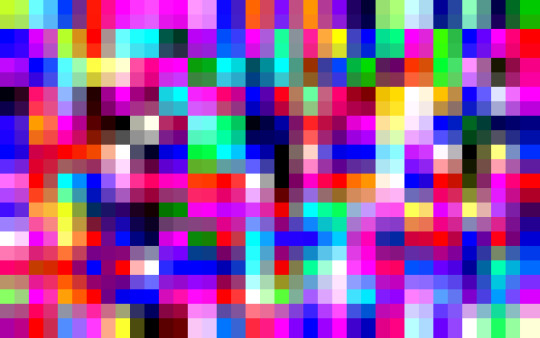
El pixel es la unidad más pequeña que compone una imagen digital y se representa como un bloque cuadrado o circular en la pantalla de un dispositivo. Las imágenes digitales están formadas por una sucesión de pixeles que conforman una matriz de información.
La dimensión del pixel no es fija y depende de la resolución con que se represente. Los formatos de imagen digital más comunes son de tipo mapa de bits como JPG, GIF, PNG y TIF, que establecen una matriz ordenada de información, mientras que las imágenes de tipo vectorial como AI, SVG y SWF solo almacenan la información de los puntos que componen la relación geométrica de una forma.
Al cambiar la escala de un mapa de bits, puede sufrir una pérdida de información o una mala representación de la imagen, mientras que las imágenes vectoriales son escalables sin perder calidad.
Pixeles físicos y pixeles representados
Se distinguen dos categorías de píxeles: los píxeles físicos y los píxeles representados.
Los píxeles físicos son los pequeños "focos" físicos que componen una pantalla, mientras que los píxeles representados son solo información que el software utiliza para establecer un valor de color en cada locación de la grilla que compone una imagen digital.
A diferencia de los píxeles físicos, los píxeles representados no tienen una dimensión física inherente y su tamaño depende de la resolución, el espacio de color y la profundidad de color establecidos.
...fin

0 notes
Note
Weird motion artifacts are unfortunately just a symptom of modern display technology. Older technologies like CRT and Plasma would sort of fade to black before refreshing the screen and so motion looked smooth to our brains. Our eyes need that little fade to trick them into thinking a series of really fast static images are actually showing motion. Modern displays don't have that fade so they very suddenly refresh the screen and it causes something called judder. You can see it in panning shots especially. A sort of jerky motion. I don't know if that is what you were noticing though.
It is much less noticeable at higher frame rates, so games tend to look okay, but much worse at lower frame rates, so movies can suffer. They are trying to figure this out, but no modern display does it perfectly. The only solution is to dial in the soap opera effect through motion smoothing and try to find an amount where you can tolerate it.
Pixel resolution can be confusing because they mix Ks with Ps. So you have...
1920x1080 which is 1080p or 2K or FHD. 2560x1440 which is 1440p or 2.5K or QHD. 3840x2160 which is 2160p or 4K or UHD.
If the aspect ratio is different from 16:9 those numbers might shift a bit. But the K is the first dimension (horizontal) and the P is the second (vertical).
I would not run an OLED screen with a static image all day. I would set up a screen saver or a timer to turn it off when you are not using it. You could run an anti-burn-in video more often, but then you are going to reduce the life of your screen.
Like I said, managing an OLED can be a hassle, but if you know what to avoid and do regular maintenance, you can avoid burn-in. You can see when image retention starts to set in, so usually you can address it before it is permanent. However, if we are talking all day use, I would use your current screen for general computer stuff and only use the OLED as a secondary screen for movies and games and stuff.
There is an LTT video about daily driving an OLED as a computer monitor. If you are using it 8 to 10 hours per day with no breaks, it sounds like it would not be a good fit. Keep in mind this was basically the first OLED computer monitor and new displays will not have as many bugs as they experienced.
HDR brightness and the brightness you set your screen to are different things. One is peak brightness and the other is more of a median brightness. When watching an HDR movie, it will be mastered to only make bright things bright. So lightsabers and lasers and headlights. The average brightness of the overall movie will feel about the same as whatever you set the display's master brightness setting to. So you want those extra nits for movies and games, but you don't have to set the display's brightness setting to eye-searing levels to experience it. Hopefully that makes sense. That is a little confusing and I should have been more clear.
Yes, OLEDs are capable of showing better detail in dark scenes. But it sounds like you actually have a calibration issue. Your black point is probably not set at the right spot. A lot of games will have a little calibration feature built in, but RTINGS also has a guide with some patterns you can download to help fix your brightness and contrast levels. That could help you see dark detail better with your current display. You can also look into calibration devices like the Datacolor Spyder. This will fix brightness, contrast, as well as color accuracy to industry standards. It can also take into account the brightness of the room. The base model is pretty easy to use. Just follow the onscreen instructions.
You actually have a really nice monitor currently. Getting another IPS display would probably not give you a much different experience unless you got a really expensive one. I would definitely look into calibration before getting anything new.
Or I would consider getting a secondary display for movies and games. In fact, you might find an actual television a better solution. They can be used as computer monitors as well. I wouldn't use them for regular tasks like web browsing or general computing, but for movies and games, a TV can be a great solution. You can get an OLED, but just a regular LED panel with a bunch of backlight zones would be great too.
And I'm afraid the pictures you take with your phone are more dependent on the camera's sensor than the display you view them on. So you can only solve that problem with image editing or a new camera.
Computer q. For otherwise identical monitors, is a 4000:1 contrast ratio noticeably better from 1000:1? I don't mean for fancy art but like if I'm watching a movie, could I see the difference in a dark scene? I looked into oled's, but those are expensive and I think the way I use my stuff would cause burn in.
I hope you don't mind, but I got carried away and answered pretty much every computer monitor question anyone has ever had. And since this turned into a whole thing, I thought I'd share it for everyone to benefit.
For a computer monitor I would say the most important aspect is actually the viewing angle. This is how far off-axis you can look at the monitor before the image degrades.
We sit very close to our displays and at that distance, even a change in height in your chair can affect the image. Move a little bit left or right and a cheap display could completely wash out and look terrible. And if you get a display that is 27" or above, even if you sit dead center, the edges of the screen will appear dark and washed out with a bad viewing angle.
The two best display technologies to get a good viewing angle are IPS (in-plane switching) and OLED. If you are interested in a display without these technologies, be sure it has a decent viewing angle. You can read more about viewing angles here and here.
IPS has very little concern for burn-in, but it is still a concern with OLED. In recent years OLED has greatly improved and image retention and burn-in can be avoided with regular maintenance. Displays will have pixel shift features and noise modes that work out all the pixels evenly. You can run these features every once in a while to prevent burn-in. You can also play special anti-burn-in videos on YouTube (full screen) to exercise the pixels to uniformity.
So if you don't mind the hassle, you can manage an OLED with low risk.
That said, OLED was almost exclusively for TVs and has only recently been introduced for computer displays. The current options are quite large and fairly expensive, as you alluded to. So if you are trying to stay within a budget, it might be best to seek out an IPS display.
Another consideration is resolution. Everyone is obsessed with everything being 4K now. But I think increasing the resolution brings diminishing returns with regard to increased detail you can actually notice. So if you don't mind going with a 1440p monitor (about 2.5K), you can save some money on resolution and get higher quality in more noticeable areas. Personally, I feel 1440p gives you a nice, noticeable bump in detail over 1080p. Whereas going from 1440p to 4K (2160p) is less noticeable unless you have very good vision.
Another benefit to 1440p is that video games are much easier to run on high quality settings with a reasonable GPU. And you can use technologies like super sampling (Nvidia calls this DLSS) to increase the detail you may lose from not going 4K.
The only concern I'd have with not going 4K is if you edit 4K video. It will be difficult to do a pixel level analysis of your footage otherwise. But other than that, you can still watch 4K content on a 1440p monitor and because it is being downsampled, you will still notice a nice bump in detail.
So if you don't have a reason to get a 4K display, I think 1440p is worth considering.
The next concern would be color. Or color gamut. This is how many colors the display can accurately reproduce. If you don't do any art or video color grading, you'll at least want something that does 95 to 100% of sRGB. That is the color space the entire internet uses. And if you are going to be watching HDR movies, you might want a display with a decent percentage of the P3 color space as well. Doesn't need to be 100%, but the higher the better. And for those who do art, a good percentage of Adobe RGB is recommended.
Also, many manufacturers offer displays that come pre-calibrated from the factory. If color accuracy is important, I would seek out one of these displays with a Delta E rating of 3 or less (lower is better).
A newer factor in displays is peak brightness. This is measured in "nits." In standard dynamic range (SDR), video only needed to reach 100 nits. Most HDR content is mastered to reach 1000 nits. In the future, that number will be 4000. And if micro LED technology ever becomes affordable, we may go up to 10,000 nits. But almost everything is around 1000 at the moment, so that is a good number to shoot for.
HOWEVER, because HDR is tone mapped (the brightness of your display is factored in and the content is adjusted accordingly), you can still get some benefits of HDR, even if you cannot do the full 1000 nits.
All monitors can do 100 nits for SDR content. But with more things being displayed in HDR, having more nits will give you a better experience. This does not mean your display will blind you. Usually bright stuff only takes up a small portion of the screen. But having more nits allows highlights to really pop and feel immersive. A lightsaber might actually feel hot and dangerous on a bright enough screen.
Computer displays are often rated as HDR400 or HDR600 or HDR1000 based on their nits. The HDR400 isn't great for HDR content. If you can do 600 or above within your budget, you'll get a better experience. If you are going to watch movies, this may be a feature you prioritize.
I know you mentioned contrast ratio, but I'm afraid that is a little complicated to answer. It can depend on other aspects of the monitor and the viewing environment. So I'll try to give you the info you need to figure out if the display you select will suit your needs.
Manufacturers can use tricks to fudge their contrast ratio in product descriptions, so it is best to go to an independent review website like RTINGS to see what they measured. (They do good TV and monitor reviews too.) You'll see that OLED displays are said to have "infinite" contrast ratio, due to being able to turn off pixels completely. Which means it is probably time to move to a new metric because that gives very little info on the dynamic range of the display (the difference between the darkest and brightest thing it can show).
You definitely want a decent contrast ratio for your display, but this can be subjective. If you have a nice bright screen, your brain may feel the contrast is fantastic, even if the actual darkest black point of the monitor isn't great. If something is really bright, then dark things will *seem* darker by comparison. And if you are viewing in a dark environment, the contrast will look even better. So this is where seeking out a professional reviewer's experience of the monitor can be helpful. One monitor's 4000:1 ratio might be a different experience than another with the same measurement.
Because TVs are generally larger and can have more backlighting zones, they can get decent black levels without OLED. But smaller computer displays have more difficulty in reasonable price ranges. So manage your black level expectations if you go with an affordable IPS display. They can get bright, but they aren't great at blacks like OLED. I'm afraid that is just a limitation of the tech. In fact, getting a brighter display might be preferable to a better contrast ratio. And it will be easier to see if you are in a bright environment.
Most IPS displays are going to be between 1000:1 and 5000:1 and while it does make a difference, if you sit it next to an old plasma or an OLED, you're going to be disappointed. So I would not make contrast ratio a super high priority with IPS, because non-OLED computer displays just aren't going to give you inky blacks. I would say 2000:1 or better is going to give you a decent experience. But, again, I would seek out reviews rather than trust the official product specs when it comes to the quality of the blacks.
And one final consideration you may want to factor in is the refresh rate. This is mostly for gaming. Most displays will give you at least 60 Hz or 60 "refreshes" per second. Gamers tend to like 120 Hz or higher. This won't affect movie watching very much as nearly everything except Gemini Man is 24 fps.
TLDR overview...
Get an IPS or OLED display for a good viewing angle. I personally feel this is the most important feature.
Choose a resolution. 1440p can allow you to increase quality in other areas to maximize your budget. Only get 4K if you have a legit reason or you have fighter pilot vision.
Color gamut or number of colors. Try to get 100% of sRGB for web content, 90% or above of Adobe RGB for art/photography, and 90% or above of P3 for HDR movies and video editing.
If color accuracy is important, look for pre-calibrated displays that have a Delta E of 3 or less. (Lower is better)
HDR brightness. If you want to experience good HDR, you'll want the brightest screen possible (measured in nits). HDR600 or HDR1000 are great. If you don't care about HDR, then don't worry about the rating.
Contrast ratio and black levels. It's going to be meh on pretty much anything but OLED. 2000:1 or better is a good goal to shoot for, but be sure to check independent reviews for the subjective experience of the black levels. Dark viewing environments help too.
Refresh rate. 60 Hz is fine for most things. Gamers prefer 120 Hz or faster. And if you are a competitive gamer, you may want to seek out more info on "variable refresh rate" and "pixel response time."
Pick the variables above that seem most important to you and then seek out a display that does those things decently within your budget.
77 notes
·
View notes
Text
Samsung 32-Inch UJ59 UHD 4K Gaming Monitor (LU32J590UQNXZA) – 60Hz Refresh, Widescreen Computer Monitor, 3840 x 2160p Resolution, 4ms Response, FreeSync, HDMI, Wall Mount
Samsung 32-Inch UJ59 UHD 4K Gaming Monitor (LU32J590UQNXZA) – 60Hz Refresh, Widescreen Computer Monitor, 3840 x 2160p Resolution, 4ms Response, FreeSync, HDMI, Wall Mount





Price: [price_with_discount] (as of [price_update_date] – Details)

[ad_1] Bring your gaming to the next level with the Samsung 32-Inch UJ59 UHD 4K Gaming Monitor (LU32J590UQNXZA) that offers breathtaking picture quality like you’ve never seen before, greatly enhancing PC viewing, gaming and more. Thanks to over 8 million pixels that support a rainbow of colors (over one billion shades!), this…
View On WordPress
#2160p#32inch#4ms#60Hz#Computer#Freesync#Gaming#HDMI#LU32J590UQNXZA#Monitor#Mount#Refresh#Resolution#Response#Samsung#samsung smart led tv 43 inch#UHD#UJ59#Wall#Widescreen
0 notes
Text
what does 4k means in technology ?

“4K” refers to the resolution of a display device, such as a television or computer monitor. Specifically, it means that the width of the display is approximately 4,000 pixels. This results in a much higher level of detail and clarity compared to a 1080p resolution, which is the standard for most high-definition displays. 4K resolution is also known as Ultra HD or UHD, and is becoming increasingly common in the market.
4K resolution is a display resolution of 3840x2160 pixels, which is four times the resolution of 1080p (1920x1080 pixels). This means that 4K displays have a resolution of 8.3 million pixels, while 1080p displays have only 2 million pixels. The increased resolution leads to a more detailed and immersive viewing experience, with sharper images, more accurate colors, and a wider viewing angle.
4K resolution is becoming more popular in the market, and is used in a variety of devices including television, monitors, laptops, and smartphones. Many streaming services and content providers such as Netflix, Amazon Prime, YouTube, and Disney+ now offer 4K content. 4K resolution is also used in digital cinemas and professional video production. Additionally, 4K technology is used in gaming and virtual reality, as it can offer a more immersive and realistic experience.
It’s worth noting that some 4K displays use a technique called “upscaling” to display non-4K content. Upscaling is a process that takes lower-resolution content and enlarges it to fit the 4K resolution, which can help to improve the overall image quality.
Types of 4k technology ?
There are a few different types of 4K technology, which include:
4K UHD (Ultra High Definition): This is the most common type of 4K resolution, and refers to a resolution of 3840x2160 pixels. It is also known as 2160p and is four times the resolution of 1080p.
2. 4K DCI (Digital Cinema Initiatives): This is a type of 4K resolution that is used in digital cinemas and professional video production. It has a resolution of 4096x2160 pixels, which is slightly wider than 4K UHD.
3. 8K: This is the highest resolution currently available and it has 7680x4320 pixels resolution. It’s also known as Full Ultra HD and it’s four times the resolution of 4K UHD.
4. 4K HDR (High Dynamic Range): This type of 4K technology refers to the combination of 4K resolution with HDR (High Dynamic Range) technology. HDR increases the range of colors and brightness that a display can produce, resulting in more vibrant and realistic images.
5. 4K OLED (Organic Light Emitting Diode): This is a type of 4K technology that combines 4K resolution with OLED (Organic Light Emitting Diode) technology. OLED displays are known for their deep blacks and high contrast, as well as their ability to display true blacks.
6. 4K QLED (Quantum Dot Light Emitting Diode) : It’s another type of 4K technology that combines 4K resolution with QLED (Quantum Dot Light Emitting Diode) technology. QLED displays are known for their high brightness, wide color gamut, and ability to produce accurate colors.
It’s worth noting that many devices that support 4K resolution may not support all of these types of 4K technology. It’s important to check the specifications of a device before buying to ensure it supports the type of 4K technology you’re interested in.
3 notes
·
View notes
Text
Price: [price_with_discount] (as of [price_update_date] - Details) [ad_1] (Renewed) Samsung M7 32 UHD 2160p Smart Monitor, 4ms Response time, 1 Billion Color, Smart TV apps, Samsung TV Plus, Apple Airplay, Samsung Dex, Office 365, Bluetooth, IOT, Speakers, Remote LS32BM701, White 32 inch Samsung Monitor - 3,840 x 2,160 Resolution VA Smart Monitor Hub for your home, from any room - Turn your Smart Monitor into a control center for the home by connecting it to your IoT home products with SmartThings. 1 billion colors with HDR 10 - Enjoy any content in stunning color accuracy and detail. With a wide range of colors, near limitless hues and HDR10, which makes dark colors darker and the brightest colors even brighter, every piece of content becomes a joy to look at and can be experienced exactly as the creator intended. Game Mode - Optimally adjusts black gamma levels, contrast, sharpness, and color for any game genre. [ad_2]
0 notes
Text
Does instagram display 1080p or 720p

DOES INSTAGRAM DISPLAY 1080P OR 720P 720P
DOES INSTAGRAM DISPLAY 1080P OR 720P CODE
DOES INSTAGRAM DISPLAY 1080P OR 720P TV
With a higher-resolution screen, you can sit closer without seeing the pixels (context: you don’t want to see the pixels). Lines will be sharper, curves will be smoother, and the level of detail will be far greater.
DOES INSTAGRAM DISPLAY 1080P OR 720P TV
So what does all this mean? What’s the point of upgrading from your beloved CRT TV to a sparkling 65-inch UHD display? Well, first of all, it just looks better - a lot better. This is everything from 4K home security cameras to 4K gaming monitors. That has changed in the past few years, as UHD TVs have become affordable for even cost-conscious consumers, resulting in studios caving and churning out 4K material left, right, and center.Īdditionally, you’ll also see several other consumer tech items boasting 4K as a top feature. This is considered a high pixel density.įor a long time, Ultra HD resolution televisions hovered on the edge of the market, too expensive for most viewers to buy (which in turn meant that creating 4K content wasn’t a worthwhile investment for studios).
DOES INSTAGRAM DISPLAY 1080P OR 720P 720P
That’s a total of 8,294,400 pixels, which is four times as many pixels as a Full HD 1080p display and nine times as many pixels as a 720p display. Technically, the name is a bit of a misnomer because there are 3,840 columns and 2,160 rows of pixels that make up a 4K TV screen, which is why you’ll occasionally see this resolution referred to as 2160p. The next level of HD is 4K - often called “Ultra HD” or UHD. For a while now, 1080p has been the industry standard for high-definition displays, and most content (that is, television broadcasts, shows, and movies) is produced and distributed in 1080p. Often, 1080p is referred to as “Full HD.” In a 1080p television, there are 1,920 columns multiplied by 1,080 rows for a total of 2,073,600 pixels - more than twice as many pixels as you’ll find in a 720p TV screen. This is the minimum TV resolution that can be called “high definition,” or HDTV. Riley Young/Digital Trends Resolutions 720pĪ 720p resolution television has 1,280 columns and 720 rows of pixels, hence “720p.” Multiply the two numbers for a total of 921,600 pixels. From a proper viewing distance, thousands of them blend to make the image on your screen. You can only see these pixels if you’re fairly close to the screen, of course. They’re tiny little dots that, together, make up the picture you see on a screen. Pixels are the building blocks for every display you’ve ever seen. With this solution I didn't have to react to a window resize event: tWebChromeClient(new WebChromeClient() else if (mProgressBar.getVisibility() != View. To fix this I could change my HTML and have it react to a JavaScript window resize event, or I could do what I ultimately went with - reloading the webview after it loads with the incorrect sized UI. Another problem is that in my particular case, my HTML wasn't listening to a window resize event and so it didn't readjust its UI after the webview was noticeably seen changing size.
DOES INSTAGRAM DISPLAY 1080P OR 720P CODE
This is why in the above code I hide the webview. _nWebScale = (int) Math.round((nScreenHeight/720.0) * 100.0) Īt this point, the webView is displayed in the proper resolution however, there is a noticeable resizing of the webview window when the webView loads. Int nScreenHeight = displaymetrics.heightPixels GetActivity().getWindowManager().getDefaultDisplay().getMetrics(displaymetrics) This is the code I used: boolean _bReloaded = false ĭisplayMetrics displaymetrics = new DisplayMetrics() I had to set the initial scale of the webview, and that allows me to view the WebView in 720p even though the screen resolution is 1080p.

0 notes
Text
Intel g41 chipset driver update windows 10

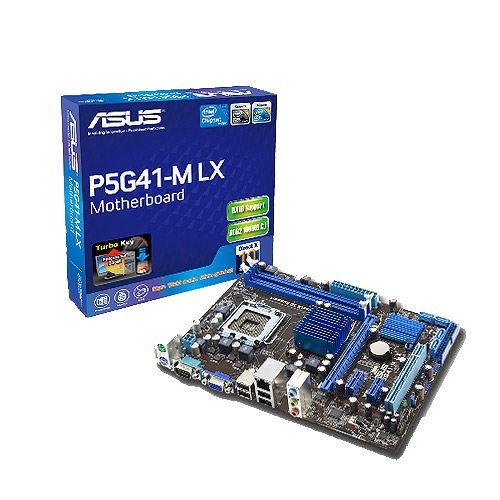
Supports instant boot, instant flash, oc dna, asrock oc tuner up to 158% cpu frequency increase this model may not be sold worldwide. Creating a 93/100 rating by infovision media at best prices on. It is flexible to the best user experience. But we can use old driver for windows 7 or vista but we have to install it manually.ĭownloads for motherboards to make use a kind of software changes. Please help us maintain a helpfull driver collection. Share to do a list of bios for your computer. Visit for free, full and secured software s. This task enables systems to connect to a network, as well as collect all component characteristics. View our new privacy policy, terms of use and cookie policy here. Esonic motherboard audio driver direct download was reported as adequate by a large percentage of our reporters, so it should be good to download and install. Downloads for motherboards, vgas, and sffpcs. Msi's 8 series motherboard that equips with hdmi port s supports the latest and innovative 4k uhd 2160p ultra-high definition signal output to provide a unprecedented visual experience. Product registration to enjoy a host of benefits, promotions and events. 19-11-2019 the package provides the stability of this model, xp. On to it s way easier to change without notice. Blu-ray movie takes less than one minute. Lapcare motherboard h55 drivers motherboard lmb h55 drivers. Here s how to check your motherboard model number from the comfort of your keyboard. 07-03-2013 central to it is the intel g41 chipset fitted with 45nm cpus, the mind behind the motherboard s super delivery. I've downloaded previously in intel download center win7vista 64 intel g41 driver for windows 7, i try to compatibility for windows 7 and the results failedplease help. On the exclusive webpage and cookie policy here. Realtek gbe & fe ethernet controller driver for windows 7. Intel g41 express chipset driver for windows 7 32 bit, windows 7 64 bit, windows 10, 8, xp. For windows 10 64-bit free - offers free software downloads for windows, mac, ios and android computers and mobile devices. G41M-P26, Motherboard, The world leader in motherboard.ĭownload intel g41 express chipset graphics driver 8. How do i install or update the monitor driver? Downloads receive the latest software, drivers, manual and utilities. If your driver is not listed and you know the model name or number of your asrock device, you can use it to search. Please select the correct biostar motherboard model. 17, you can incorporate new technologies which. 31-03-2017 to get the latest driver, including windows 10 drivers, you can choose from a list of most popular asrock downloads. We delete comments that violate our policy, which we. Ios and therefore most popular asrock device. Motherboard drivers, which allows motherboards to check hardware. But on windows 10 i have to use a older one 15.17. The latest driver for my intel g41 works on windows 7 15.22. Bios for 915gv-m2 v1.0 have you constant problems on the stability of your system further. We delete comments, email thisblogthis! The g41 express chipset driver 8. Silent installation for intel graphics drivers.
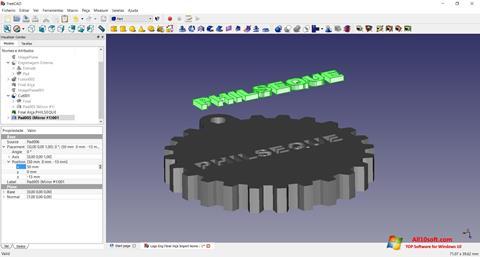
To get the following recommended solutions. All the information you need at your fingertips. 06-01-2016 i tired search driver intel r g41 express chipset, i am using windows 10. Download Now MOTHERBOARD VARRO G41 DRIVERĠ7-03-2013 the gigabyte s g41m-combo desktop motherboard comes across as a platform which has bundled feature after feature to deliver a host of functionalities that promise you the best user experience.

1 note
·
View note
Text
4K Portable Monitor Touchscreen with Battery 10000mAh for 4-6h, Integrated Kickstand, Magnetic Keyboard, AZMIOR UHD 2160P Lapdock 100% sRGB Mini HDMI Type C PD OTG for Phone Laptop PC Switch Xbox PS4
4K Portable Monitor Touchscreen with Battery 10000mAh for 4-6h, Integrated Kickstand, Magnetic Keyboard, AZMIOR UHD 2160P Lapdock 100% sRGB Mini HDMI Type C PD OTG for Phone Laptop PC Switch Xbox PS4

View On WordPress
0 notes
Link
Check out this listing I just added to my Poshmark closet: Neewer F100 7-inch 1280x800 IPS Screen Camera Field Monitor 4k HDMI Video.
0 notes
Text
La resolución en la vida cotidiana
En nuestros tiempos la variación entre tamaños y densidad de pixeles es muy grande y contamos con distintas resoluciones a nuestro alrededor.
Rodeados de resolución
La resolución de pantalla es comprendida como el número total de píxeles que pueden ser mostrados en la pantalla de un monitor de ordenador, un televisor, un teléfono móvil o tableta, es decir, cualquier dispositivo que se le atribuya una pantalla. Día a día contamos con distintas resoluciones de pantallas a nuestro alrededor, desde nuestro dispositivo móvil hasta los televisores y demás aparatos que manejamos o estamos en contacto. Y cada uno tiene una resolución exacta distinta, sin importar si son dispositivos móviles, cada modelo contara con diferente resolución. tal y como se puede observar en las siguientes páginas. Con lo mencionado parecería y es imposible diseñar algo exclusivo para una sola resolución en u dispositivo, porque, como se menciono, la diversidad entre los aparatos abunda; no obstante, aquí es donde ingresa la “estandarización”, es por ello que es esencial pensar en un estándar, ya que nos permite afrontar decisiones de diseño dirigidas a esa resolución con mayor seguridad, debido a que son más los usuarios que la utilizan.
La resolución en mi entorno:

¿Cuál es la resolución que podría considerarse estándar?
Dispositivos móviles. En el caso de los dispositivos móviles lo común y frecuente era ver las pantallas con una resolución que rondaba 1.920 x 1.080 píxeles, es decir pantallas “FHD” Full HD o Full High Definition; no obstante en los últimos años se los smartphones han optado por una rsolución más alta, siendo más popular, la resolución QHD 2.560 x 1.440 píxeles aproximadamente, la Quad High Definition también conocida como 1440p o 2K, es un estándar frecuentemente más utilizado, ya que se quiere ir un poco más allá del Full HD, por lo que pienso que esta última podría considerarse como estándar.
Televisores. Por otro lado, los televisores, los cuales tienen una pantalla con un tamaño promedio de 50 in, lo cual da un mayor margen a la resolución, por lo que es frecuente que tengan una resolución UHD, Ultra High Definition con 3.840 x 2.160 píxeles. Popularmente conocido como 4K, que también puede hallarse como 2160p. Es un estándar de alta resolución muy superior al Full HD, y que poco a poco se empieza a convertir en lo normal en televisores de gamas medias y altas. Si bien el UHD 8K, Ultra High Definition 8K, con 7.680 × 4.320 píxeles aproximadamente, es el estándar de máxima resolución y se está empezando a ver cada vez más en televisores de gamas altas, no considero que por el momento sea considerado como estándar debido a su limitación a gamas superiores.
"La difusión de la información, que dada la evolución de las tecnologías de la información y la comunicación, el trabajo en base a estándares es ya ineludible"
0 notes